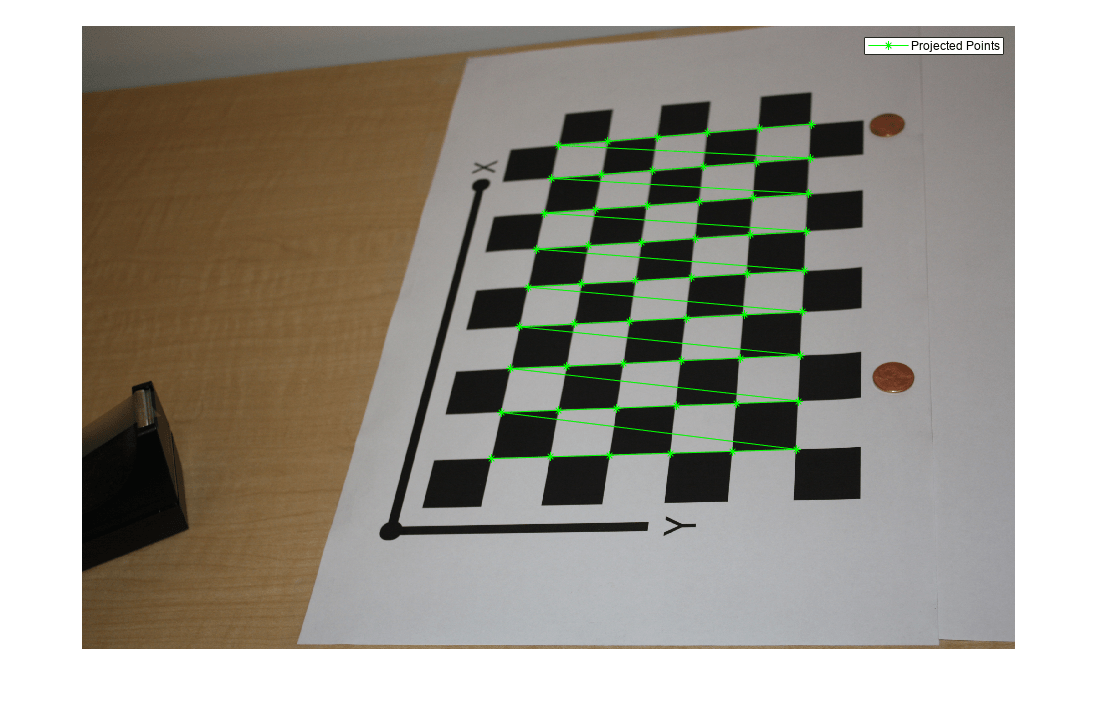world2img
Syntax
Description
imagePoints = world2img(worldPoints,tform,intrinsics)worldPoints into points on an image,
imagePoints, according to a rigid geometric transformation,
tform. intrinsics can be a
cameraIntrinsics, cameraIntrinsicsKB, or a
fisheyeIntrinsics object.
imagePoints = world2img(worldPoints,tform,intrinsics,ApplyDistortion=distort)cameraIntrinsics and cameraIntrinsicsKB
objects.
[
also returns the indices of valid image points that are within the boundary of the
image.imagePoints,validIndex] = world2img(___)
Examples
Input Arguments
Output Arguments
Extended Capabilities
Version History
Introduced in R2022bSee Also
Apps
Functions
img2world2d|undistortImage|undistortPoints|estimateCameraParameters|estimateExtrinsics|estworldpose|estrelpose
